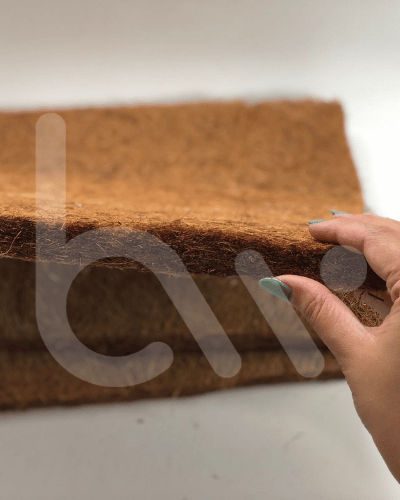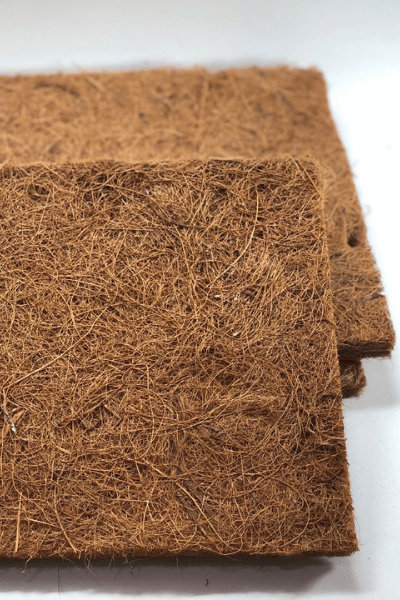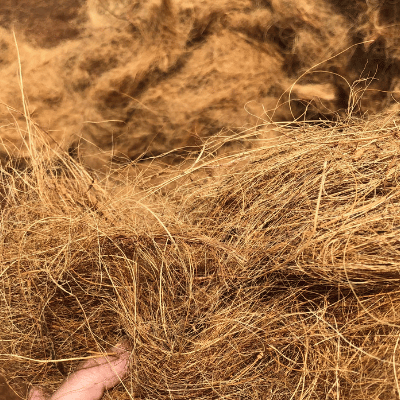Coco fiber sheets are a game changer in sustainable gardening. Made from the husks of coconuts, this natural coir has been used for centuries in tropical regions. They provide excellent drainage and aeration for plants, making them a favourite among eco-conscious gardeners. Coco fiber is biodegradable and renewable, offering an alternative to synthetic materials. Using coco fiber sheets can improve soil health and support plant growth. As more people turn to green practices, these versatile sheets are gaining popularity. Discover how they can transform your gardening experience today.

Understanding Coco Fiber
What is Coco Fiber
Coco fiber, also known as coir, comes from the outer husk of coconuts. This natural material is a renewable resource. It has been used for centuries in various applications, especially in gardening by home gardeners and textiles. The fibers are long, strong, and resistant to saltwater.
Properties and Benefits
Coco fiber has several notable properties. It is highly absorbent, making it excellent for soil conditioning. The fibers retain moisture while allowing air to circulate. This promotes healthy root growth in plants. Coco fiber is biodegradable and environmentally friendly. It breaks down over time, enriching the soil.
Using coco fiber can improve drainage in potting mixes. It also helps prevent soil erosion when used in landscaping. Many gardeners prefer natural coir over peat moss due to its sustainability.
How it is Made
The production of coco fiber involves several steps. First, coconuts are harvested from coconut palms. The outer husk is then separated from the fruit. After that, the husks are soaked in water for several months. This process softens the fiber and makes them easier to extract.
Once soaked, workers manually or mechanically extract the fiber from the husk. These fiber are then washed, dried, and processed into sheets or mats. The entire process can take up to six months from start to finish.

Uses of Coco Fiber Sheets
Gardening and Horticulture
Coco fiber sheets are widely used in gardening. They serve as excellent mulch. This helps retain moisture in the soil. The fibers also prevent weed growth, which is beneficial for plant health. These sheets provide a natural environment for root systems. They improve aeration and drainage in potted plants. Many gardeners prefer coco fiber for its sustainability.
Home and Office Decor
Coco fiber sheets, a natural coir material, find their place in home and office decor too. They can be used as decorative mats or wall hangings. The natural texture adds warmth to any space. These sheets are also durable, making them ideal for high-traffic areas. Some people use them for crafting projects, creating unique items like coasters or baskets. Their versatility makes them popular among DIY enthusiasts.
Industrial Applications
Coco fiber sheets have industrial uses as well. They are often used in erosion control measures. The fibers help stabilise soil on slopes and embankments. Coco fiber is used in automotive industries for sound insulation. Its natural properties make it an eco-friendly alternative to synthetic materials. Companies increasingly turn to coco fibers due to their sustainability.
Benefits of Coco Fiber Sheets
Eco-Friendly Qualities
Coco fiber sheets, a natural coir product, are made from the husks of coconuts. This natural material is biodegradable and sustainable. Using coco fiber reduces waste in landfills. It also promotes environmental conservation. Many people prefer these sheets for their eco-friendly qualities. They help lower carbon footprints by using renewable resources.
Durability and Longevity
These sheets are known for their strength. Coco fiber has a high tensile strength, making it resistant to wear and tear. They can last for several years without degrading. This durability makes them ideal for various applications, from gardening to home insulation. Investing in coco fiber sheets means fewer replacements over time.
Water Retention Features
Coco fiber sheets excel in water retention. They can absorb moisture while allowing excess water to drain away. This balance prevents root rot in plants. The ability to hold water helps maintain soil moisture levels. Gardeners appreciate this feature as it reduces the need for frequent watering.

How to Choose the Right Sheet
Assessing Quality and Texture
Quality and texture play a vital role in selecting a coco fiber sheet. Look for sheets that have a dense structure. A denser sheet often provides better durability and support. Check for any visible flaws or inconsistencies. Smoothness is also important, as it affects comfort and usability.
Feel the texture before purchasing. Softer sheets are ideal for bedding, while coarser varieties work well for mats or outdoor use. Understanding these factors will help you select a product that meets your needs.
Size and Thickness Options
Coco fiber sheets come in various sizes and thicknesses. Common dimensions include 1m x 2m or 2m x 3m sheets. Thickness can vary from 5mm to 20mm, depending on the intended use. Thicker sheets provide more cushioning and insulation, making them suitable for flooring or heavy-duty applications.
Consider where you plan to use the sheet. Smaller sizes fit well in confined spaces, while larger sheets cover more area. Always measure your space before deciding.
Price and Budget Considerations
Prices of coco fiber sheets vary widely based on quality, size, and supplier. Basic sheets may cost around £10, while premium options can reach £50 or more. Compare prices from different retailers to find the best deal.
Budget constraints are essential when choosing a sheet. Higher-quality products may offer better longevity, potentially saving money in the long run. Factor in your specific needs and usage frequency to make an informed decision.
Caring for Coco Fiber Sheets
Cleaning and Maintenance Tips
Coco fiber sheets require regular cleaning to maintain their quality. Use a soft brush or cloth to remove dust and debris. Avoid harsh chemicals; they can damage the natural fibers. Instead, opt for mild soap mixed with water. Gently scrub the surface and rinse thoroughly.
For deeper cleaning, soak the sheet in a solution of warm water and vinegar. This method helps eliminate odours and bacteria. Allow it to dry completely before using it again. Regular maintenance extends the lifespan of coco fiber sheets.
Storage and Handling Advice
Store coco fiber sheets in a cool, dry place. Excess moisture can lead to mould growth, which damages the material. Ideally, keep them flat or rolled up loosely to prevent creasing. Avoid stacking heavy items on top, as this can compress the fibers.
When handling coco fiber sheets, wear gloves if you have sensitive skin as it is a natural product. The fibers may irritate some individuals upon contact. Always check for any signs of wear or damage before use. If you notice any tears or fraying, consider replacing the sheet to ensure optimal performance.

Closing Thoughts
Coco fiber sheets are versatile, eco-friendly, and packed with benefits. You now understand their uses, how to choose the right one, and the best ways to care for them. These sheets not only enhance your gardening efforts but also contribute positively to the environment.
Invest in coco fiber sheets to elevate your projects. They’re a sustainable choice that supports healthy growth and soil quality. Make the switch today and enjoy the many advantages they bring. Explore your options and see how these sheets can transform your gardening experience!
Frequently Asked Questions
What is coco fiber?
Coco fiber is a natural material derived from the husks of coconuts. It is known for its durability and versatility, making it ideal for various applications such as gardening, crafts, and upholstery.
How are coco fiber sheets made?
Coco fiber sheets are produced by processing coconut husks. The fibers are extracted, cleaned, and compressed into sheets, ensuring they retain their strength and flexibility for multiple uses.
What are the main uses of coco fiber sheets?
Coco fiber sheets are widely used in horticulture for plant support, erosion control, and as biodegradable mulch. They are also popular in crafting and home decor projects due to their aesthetic appeal.
Are coco fiber sheets eco-friendly?
Yes, coco fiber sheets are eco-friendly. They are made from renewable resources and are biodegradable, reducing environmental impact compared to synthetic materials.
How do I care for coco fiber sheets?
To care for coco fiber sheets, keep them dry and store them in a cool place. If used outdoors, ensure they remain ventilated to prevent mould growth.
Can coco fiber sheets be reused?
Absolutely! Coco fiber sheets can be reused multiple times. After use, clean them thoroughly and let them dry before storing or repurposing.
Where can I buy coco fiber sheets?
You can purchase coco fiber sheets at garden centers, craft stores, or online retailers. Look for reputable suppliers that provide high-quality products for best results.
In conclusion, if you are eager to delve deeper into the details of coir products, feel free to explore our website at https://cocopeatcocofiberaustralia.com/. Additionally, for direct and instant connection with our team, you can reach us through the following WhatsApp link https://wa.me/61412773364. We look forward to providing you with the information and assistance you need.
